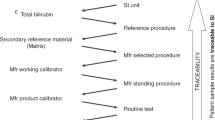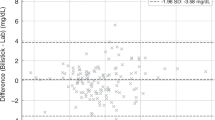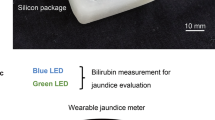Abstract
Bilirubin, an old tetrapyrrolic compound that had occurred on Earth early on, is the final product of the catabolic heme pathway in the intravascular bed. Data from recent decades revealed its enormous bioactivity in a human body, including antioxidant, anti-inflammatory, immunosuppressive, antiproliferative, and even cell signaling activities that translate into beneficial effects of mildly elevated serum bilirubin concentrations resulting in prevention or amelioration of progression of many diseases of civilization. Furthermore, recent advances in bilirubin research have changed our understanding of bilirubin metabolism in the neonatal period, with discoveries of bilirubin reductase of bacterial origin in the intestinal lumen with direct pathophysiological and clinical implications. Similarly, our knowledge of the pathophysiology of neonatal jaundice phototherapy has improved substantially, although we are still at the beginning of the path to understand all the pathophysiological aspects and reveal related clinical implications.
Bullet points
-
Recent advances in our understanding of bilirubin metabolism with clear clinical implications, as well as other, so far putative, translational impacts.
-
Demonstration of the beneficial biological potential of bilirubin, its evolutionary and ontogenetic functions, its possible role in chronobiology, and its correlation with increased fitness in elite athletes (a sort of gain of function).
-
Discussion on the protective role of physiological neonatal jaundice.
-
Inspiration for further basic and clinical research in specific fields of bilirubin metabolism.
Similar content being viewed by others
Versatile biological functions of bilirubin: from phylogenesis to ontogenesis, from biological activities to clinical impacts
Since the major discoveries of heme structure, bilirubin, and biliverdin synthesis made by a genius German chemist Hans Fischer (1930 Nobel Prize in Chemistry laureate for his contributions to the field of porphyrin chemistry), bilirubin has been thought for decades to be a waste, potentially dangerous product of the heme catabolic pathway.
However, based on intensive research in bilirubin metabolism over the last 40 years, bilirubin now appears to be a versatile bioactive molecule with multiple functions (Table 1).
Bilirubin belongs to the phylogenetically old superfamily of heme-derived tetrapyrrolic compounds. It is a product of the degradation of heme in the intravascular bed and plays an enormous role in the regulation of various biological processes in a human body.
Bilirubin has a role in oxidative stress defense,1 being the most potent endogenous antioxidant substance. This property, together with its general immunosuppressive activities,2 translates into suppression of pro-inflammatory status, and low-grade chronic inflammation that is a common pathophysiological denominator of many diseases of civilization.3 In fact, this has been repeatedly proven in many recent clinical studies and summarized in recent review articles.4,5
Very recently, bilirubin has begun to be viewed as a molecule with potent signaling activities6 acting as a real hormonal substance7; revealing further beneficial pathways that contribute to the prevention or amelioration of many diseases of civilization. This has been convincingly proven in subjects with Gilbert´s syndrome (benign hyperbilirubinemia),8 who are protected against the development of atherosclerotic,9 as well as other diseases.4,5 Bilirubin can even act as an exerkine, improving physical fitness, as reported in our recent study in elite athletes10 and in a recent review paper.11 In this context, it is tempting to speculate that increased fitness associated with mild hyperbilirubinemia may represent a sort of gain of function with possible evolutionary advantages for subjects with Gilbert´s syndrome, although so far no data on this hypothesis have been reported.
However, bilirubin appears to have other putative biological activities that await to be explored in deeper detail. Similar to other related tetrapyrrolic pigments that occur in nature, bilirubin may have an important role in chronobiology, acting as a regulator of the human circadian clock. This is based on older observations that popliteal illumination leads to a shift in circadian rhythms, with changes in bilirubin.12,13,14 In addition, bilirubin concentrations change during night. Interestingly, exposure to light during night increases serum bilirubin concentrations suggesting the link to seasonal affective disorders.15,16
Interestingly, bilirubin (and its precursor biliverdin) may play a role in ontogenesis, as suggested by studies on sea lampreys.17 The role of biliverdin in ontogenesis has also been reported in lower organisms such as Xenopus laevis, in which biliverdin binds to highly conserved yolk proteins vitellogenin and lipovitellin that are important for embryogenesis.18 Although detailed data in humans are lacking, it is also possible that biliverdin and bilirubin-IXα may play a developmental role in the human fetus, since these are the predominant bile pigments in fetal life. In fact, bilirubin was demonstrated to improve mouse oocyte maturation in vitro,19,20 suggesting not only its role in oogenesis but also providing an innovative strategy to enhance oocyte in vitro maturation.
Bile pigments are evolutionary very conserved structures; they appeared in the simplest organisms such as algae and cyanobacteria.21 In fact, the cyanobacterium Synechocystis sp., fully equipped with heme oxygenase and biliverdin reductase, appeared on Earth as early as 3.5 billion years ago.22 It is certainly interesting that bilirubin-related tetrapyrrolic compounds present in the blue-green alga Spirulina platensis were proven to have apparent anticancer effects,23 and the same was demonstrated for chlorophyll, another tetrapyrrolic pigment so prevalent on Earth.24 Indeed, bilirubin per se is believed to drive protection against various cancer diseases,25,26,27 as summarized in a recent review paper.28
Apart from their immune system modulating activities, bile pigments and their precursors appear to have direct antimicrobial effects. Interestingly, this has been demonstrated even in lower animals, such as birds, in which the deposition of porphyrin-like pigments in the egg shells provides protection against Gram-positive bacteria,29 as well as the feared coronaviral poultry infections.30 However, even more importantly, bilirubin has been shown to have antibacterial activities related to human infections. As early as 1937, Najib-Farah described ¨the defensive role of bilirubinaemia in Pneumococcal infection¨.31 Much later, Hansen et al. reported inhibitory effects of bilirubin on the growth of group B Streptococci, the most common bacteria involved in early-onset neonatal sepsis,32 suggesting that physiological jaundice may have an evolutionary role in protecting against early-onset neonatal sepsis. The whole context of antimicrobial effects of bilirubin is even wider, as evidenced by the very recent observation of antimalarial effects of bilirubin,33,34 which can again have even evolutionary impact.
Bilirubin reduction in the gut lumen
Very recently, the missing puzzle has been discovered in the entire catabolic pathway of heme, that is, reduction of bilirubin to urobilinoids in the intestinal lumen.35 Using a combination of biochemical analyses and comparative genomics, Hall et al. identified a novel enzyme, BilR, which can reduce bilirubin to urobilinogen. They delineated the BilR sequences from other members of the so-called Old Yellow Enzyme family by identifying key residues at the active site that were critical for the reduction of bilirubin and found that BilR is predominantly encoded by Firmicutes in the gut microbiome.35 This discovery appears to be of paramount importance since the absence of bilirubin reduction in the intestinal lumen was shown to be directly implemented in the pathogenesis of neonatal jaundice,36 and intestinal metabolism of bilirubin by the gut microbiota was demonstrated to be directly linked to serum bilirubin concentrations.37 Therefore, it is not surprising, that modulation of the gut microbiota is at the center of efforts to ameliorate the severity of neonatal jaundice. In fact, the use of probiotics as a tool to colonize the neonatal gut with favorable bacteria appears to be a viable approach with great therapeutic potential,38,39 particularly when taking into account that no specific probiotic bacteria that reduce bilirubin have been developed and used in clinical studies so far.
Neonatal jaundice and phototherapy
It is now well recognized that physiological neonatal jaundice is a functional state that provides systemic protection against the oxidative challenge due to birth, increasing the risk of various complications mediated by postnatal oxidative stress (for a review, see ref. 40). In fact, neonatal hyperbilirubinemia increases,41 while phototherapy reduces blood antioxidant capacity, inducing significant oxidative stress and pro-inflammatory status with increased production of inflammatory cytokines.42 Hence, these facts should be taken into account and perhaps become a basis for future improvement of the criteria for starting phototherapy.
On the other hand, research on neonatal jaundice phototherapy has recently been advanced, confirming the efficacy and superiority of blue-green phototherapy over blue light, both in basic research43 as well as in clinical trials.44,45 However, phototherapy for neonatal hyperbilirubinemia appears to be associated with certain risks of developing cancer and other diseases, and also higher mortality in extremely low birthweight neonates.46 Several putative reasons have been suggested, including the contribution of bilirubin photooxidation products, whose role despite certain progress in the research revealing their neuroinflammatory, oxidative stress-evoking and metabolic effects.47,48,49,50 It is clear, however, that further research is needed to fully uncover all unknown facts and mechanisms beyond phototherapy of neonatal jaundice. In this sense, a great analytical and pathophysiological tool appears on the horizon with successful and efficient synthesis of all major bilirubin oxidation products51 with the promise of using this synthetic platform for the development of stable isotope-labeled bile pigments. This, without question, would advance our attempts to understand the kinetics and biological behavior of all products generated by neonatal jaundice.
In conclusion, bilirubin and other tetrapyrrolic compounds that occur in nature exert multiple biological activities, modulating various functions in the human body. From a wider perspective, this field will certainly grow rapidly in the near future, and we will probably call bilirubin hepatokine, neurokine, metabolokine, or even exerkine. Furthermore, recent advances in our knowledge of bilirubin metabolism during neonatal age will certainly translate into improved clinical care for jaundiced newborns.
Data availability
All data discussed are included in the manuscript.
References
Stocker, R., Yamamoto, Y., Mcdonagh, A. F., Glazer, A. N. & Ames, B. N. Bilirubin is an antioxidant of possible physiological importance. Science 235, 1043–1046, https://doi.org/10.1126/science.3029864 (1987).
Jangi, S., Otterbein, L. & Robson, S. The molecular basis for the immunomodulatory activities of unconjugated bilirubin. Int. J. Biochem. Cell Biol. 45, 2843–2851, https://doi.org/10.1016/j.biocel.2013.09.014 (2013).
Furman, D. et al. Chronic inflammation in the etiology of disease across the life span. Nat. Med. 25, 1822–1832, https://doi.org/10.1038/s41591-019-0675-0 (2019).
Vitek, L., Hinds, T. D. Jr., Stec, D. E. & Tiribelli, C. The physiology of bilirubin: health and disease equilibrium. Trends Mol. Med. 29, 315–328, https://doi.org/10.1016/j.molmed.2023.01.007 (2023).
Jayanti, S., Vítek, L., Tiribelli, C. & Gazzin, S. The role of bilirubin and other “yellow players” in neurodegenerative diseases. Antioxidants 9, 900, https://doi.org/10.3390/antiox9090900 (2020).
Vitek, L. Bilirubin as a signaling molecule. Med. Res. Rev. 40, 1335–1351, https://doi.org/10.1002/med.21660 (2020).
Vitek, L. & Tiribelli, C. Bilirubin: the yellow hormone?. J. Hepatol. 75, 1485–1490, https://doi.org/10.1016/j.jhep.2021.06.010 (2021).
Vitek, L. & Tiribelli, C. Gilbert’s syndrome revisited. J. Hepatol. 79, 1049–1055, https://doi.org/10.1016/j.jhep.2023.06.004 (2023).
Vitek, L. Bilirubin and atherosclerotic diseases. Physiol. Res. 66, S11–S20, https://doi.org/10.33549/physiolres.933581 (2017).
Woronyczova, J. et al. Serum bilirubin concentrations and the prevalence of Gilbert syndrome in elite athletes. Sports Med. Open 1–10, https://doi.org/10.1186/s40798-022-00463-6 (2022).
Flack, K. D., Vítek, L., Fry, C. S., Stec, D. E. & Hinds, T. D. Cutting edge concepts: does bilirubin enhance exercise performance?. Front. Sports Act. Living 4, 1040687. https://doi.org/10.3389/fspor.2022.1040687 (2023).
Oren, D. A. Humoral phototransduction: blood is a messenger. Neuroscientist 2, 207–210, https://doi.org/10.1177/107385849600200408 (1996).
Campbell, S. S. & Murphy, P. J. Extraocular circadian phototransduction in humans. Science 279, 396–399, https://doi.org/10.1126/science.279.5349.396 (1998).
Oren, D. A. & Terman, M. Tweaking the human circadian clock with light. Science 279, 333–334, https://doi.org/10.1126/science.279.5349.333 (1998).
Oren, D. A. Bilirubin, REM sleep, and phototransduction of environmental time cues. A hypothesis. Chronobiol. Int. 14, 319–329, https://doi.org/10.3109/07420529709001423 (1997).
Oren, D. A., Desan, P. H., Boutros, N., Anand, A. & Charney, D. S. Effects of light on low nocturnal bilirubin in winter depression: a preliminary report. Biol. Psychiatry 51, 422–425, https://doi.org/10.1016/s0006-3223(01)01254-9 (2002).
Makos, B. K. & Youson, J. H. Serum levels of bilirubin and biliverdin in the sea lamprey, Petromyzon-Marinus L, before and after their biliary atresia. Comp. Biochem. Physiol. 87, 761–764, https://doi.org/10.1016/0300-9629(87)90396-3 (1987).
Montorzi, M., Dziedzic, T. S. & Falchuk, K. H. Biliverdin during Xenopus laevis oogenesis and early embryogenesis. Biochemistry 41, 10115–10122, https://doi.org/10.1021/bi020204n (2002).
Mansfield, C., Fukaya, T. & Yajima, A. Bilirubin helps to overcome the two-cell block in mouse oocyte cultures. J. Assist Reprod. Genet 11, 510–514, https://doi.org/10.1007/BF02216031 (1994).
Xi, H. et al. Enhancing oocyte in vitro maturation and quality by melatonin/bilirubin cationic nanoparticles: a promising strategy for assisted reproduction techniques. Int. J. Pharm. X 8, 100268. https://doi.org/10.1016/j.ijpx.2024.100268 (2024).
Dammeyer, T. & Frankenberg-Dinkel, N. Insights into phycoerythrobilin biosynthesis point toward metabolic channeling. J. Biol. Chem. 281, 27081–27089, https://doi.org/10.1074/jbc.M605154200 (2006).
Schluchter, W. M. & Glazer, A. N. Characterization of cyanobacterial biliverdin reductase - conversion of biliverdin to bilirubin is important for normal phycobiliprotein biosynthesis. J. Biol. Chem. 272, 13562–13569, https://doi.org/10.1074/jbc.272.21.13562 (1997).
Konickova, R. et al. Anti-cancer effects of blue-green alga Spirulina platensis, a natural source of bilirubin-like tetrapyrrolic compounds. Ann. Hepatol. 13, 273–283 (2014).
Vankova, K. et al. Chlorophyll-mediated changes in the redox status of pancreatic cancer cells are associated with its anticancer effects. Oxid. Med. Cell. Longev. 2018, 4069167. https://doi.org/10.1155/2018/4069167 (2018).
Zucker, S. D., Horn, P. S. & Sherman, K. E. Serum bilirubin levels in the US population: gender effect and inverse correlation with colorectal cancer. Hepatology 40, 827–835, https://doi.org/10.1002/hep.20407 (2004).
Vitek, L. et al. Association between plasma bilirubin and mortality. Ann. Hepatol. 18, 379–385, https://doi.org/10.1016/j.aohep.2019.02.001 (2019).
Jiraskova, A. et al. Association of serum bilirubin and promoter variations in HMOX1 and UGT1A1 genes with sporadic colorectal cancer. Int. J. Cancer 131, 1549–1555, https://doi.org/10.1002/ijc.27412 (2012).
Yi, F., Tao, S. & Wu, H. Bilirubin metabolism in relation to cancer. Front. Oncol. 15, 1570288. https://doi.org/10.3389/fonc.2025.1570288 (2025).
Ishikawa, S. et al. Photodynamic antimicrobial activity of avian eggshell pigments. FEBS Lett. 584, 770–774, https://doi.org/10.1016/j.febslet.2009.12.041 (2010).
Samiullah, S., Roberts, J. R. & Chousalkar, K. Eggshell color in brown-egg laying hens - a review. Poult. Sci. 94, 2566–2575, https://doi.org/10.3382/ps/pev202 (2015).
Najib-Farah, M. D. Defensive role of bilirubinemia in pneumococcal infection. Lancet 229, 505–506 (1937).
Hansen, R. et al. Adaptive response of neonatal sepsis-derived Group B Streptococcus to bilirubin. Sci. Rep. 8, 6470. https://doi.org/10.1038/s41598-018-24811-3 (2018).
Figueiredo, A. et al. A metabolite-based resistance mechanism against malaria. Science 388, eadq6741. https://doi.org/10.1126/science.adq6741 (2025).
Kloehn, J. & Soldati-Favre, D. Rethinking jaundice. Science 388, 1132–1133, https://doi.org/10.1126/science.ady7161 (2025).
Hall, B. et al. Discovery of the gut microbial enzyme responsible for bilirubin reduction to urobilinogen. bioRxiv https://doi.org/10.1101/2023.02.07.527579 (2023).
Vitek, L. et al. Intestinal colonization leading to fecal urobilinoid excretion may play a role in the pathogenesis of neonatal jaundice. J. Pediatr. Gastroenterol. Nutr. 30, 294–298, https://doi.org/10.1097/00005176-200003000-00015 (2000).
Vitek, L., Zelenka, J., Zadinova, M. & Malina, J. The impact of intestinal microflora on serum bilirubin levels. J. Hepatol. 42, 238–243, https://doi.org/10.1016/j.jhep.2004.10.012 (2005).
Chen, Z. et al. Probiotics supplementation therapy for pathological neonatal jaundice: a systematic review and meta-analysis. Front. Pharm. 8, 432, https://doi.org/10.3389/fphar.2017.00432 (2017).
Jiayi, C. et al. Probiotics’ effects on gut microbiota in jaundiced neonates: a randomized controlled trial protocol. Front. Pediatr. 12 https://doi.org/10.3389/fped.2024.1296517 (2024).
Vitek, L. & Schwertner, H. A. The heme catabolic pathway and its protective effects on oxidative stress-mediated diseases. Adv. Clin. Chem. 43, 1–57, https://doi.org/10.1016/s0065-2423(06)43001-8 (2007).
Belanger, S., Lavoie, J. C. & Chessex, P. Influence of bilirubin on the antioxidant capacity of plasma in newborn infants. Biol. Neonate 71, 233–238, https://doi.org/10.1159/000244422 (1997).
Chaudhari, H., Gawli, C., Kumar, A. & Patil, C. R. Oxidative stress and inflammatory alterations during phototherapy of neonatal icterus: systematic review and meta-analysis. J. Popul Ther. Clin. Pharm. 29, 871–885, https://doi.org/10.53555/jptcp.v29i04.3420 (2022).
Vreman, H. J. et al. The effect of light wavelength on in vitro bilirubin photodegradation and photoisomer production. Pediatr. Res. 85, 865–873, https://doi.org/10.1038/s41390-019-0310-2 (2019).
Ebbesen, F., Madsen, P. H., Rodrigo-Domingo, M. & Donneborg, M. L. Bilirubin isomers during LED phototherapy of hyperbilirubinemic neonates, blue-green (~478 nm) vs blue. Pediatr. Res. https://doi.org/10.1038/s41390-024-03493-w (2024).
Ebbesen, F., Rodrigo-Domingo, M., Moeller, A. M., Vreman, H. J. & Donneborg, M. L. Effect of blue LED phototherapy centered at 478 nm versus 459 nm in hyperbilirubinemic neonates: a randomized study. Pediatr. Res. 89, 598–603, https://doi.org/10.1038/s41390-020-0911-9 (2021).
Vitek, L. Risk of childhood cancer in infants treated with phototherapy for neonatal jaundice. Pediatr. Res. https://doi.org/10.1038/s41390-024-03315-z (2024).
Jasprova, J. et al. The biological effects of bilirubin photoisomers. PLoS One 11, e0148126, https://doi.org/10.1371/journal.pone.0148126 (2016).
Capkova, N. et al. The effects of bilirubin and lumirubin on the differentiation of human pluripotent cell-derived neural stem cells. Antioxidants 10, https://doi.org/10.3390/antiox10101532 (2021).
Jasprova, J. et al. Neuro-inflammatory effects of photodegradative products of bilirubin. Sci. Rep. 8, 7444. https://doi.org/10.1038/s41598-018-25684-2 (2018).
Dvorak, A. et al. The effects of bilirubin and lumirubin on metabolic and oxidative stress markers. Front. Pharm. 12, 567001. https://doi.org/10.3389/fphar.2021.567001 (2021).
Mujawar, T., Sevelda, P., Madea, D., Klan, P. & Svenda, J. A platform for the synthesis of oxidation products of bilirubin. J. Am. Chem. Soc. 146, 1603–1611, https://doi.org/10.1021/jacs.3c11778 (2024).
Funding
Supported by grants MH CZ-DRO-VFN64165 from the Czech Ministry of Health; Cooperatio Program, research area DIAG given by Charles University, and the project National Institute for Research of Metabolic and Cardiovascular Diseases (Programme EXCELES LX22NPO5104) funded by the European Union-Next Generation EU. Open access publishing supported by the institutions participating in the CzechELib Transformative Agreement.
Author information
Authors and Affiliations
Corresponding author
Ethics declarations
Competing interests
The author declares no competing interests.
Additional information
Publisher’s note Springer Nature remains neutral with regard to jurisdictional claims in published maps and institutional affiliations.
Rights and permissions
Open Access This article is licensed under a Creative Commons Attribution 4.0 International License, which permits use, sharing, adaptation, distribution and reproduction in any medium or format, as long as you give appropriate credit to the original author(s) and the source, provide a link to the Creative Commons licence, and indicate if changes were made. The images or other third party material in this article are included in the article’s Creative Commons licence, unless indicated otherwise in a credit line to the material. If material is not included in the article’s Creative Commons licence and your intended use is not permitted by statutory regulation or exceeds the permitted use, you will need to obtain permission directly from the copyright holder. To view a copy of this licence, visit http://creativecommons.org/licenses/by/4.0/.
About this article
Cite this article
Vítek, L. Bilirubin: translational perspectives. Pediatr Res (2025). https://doi.org/10.1038/s41390-025-04432-z
Received:
Revised:
Accepted:
Published:
DOI: https://doi.org/10.1038/s41390-025-04432-z



